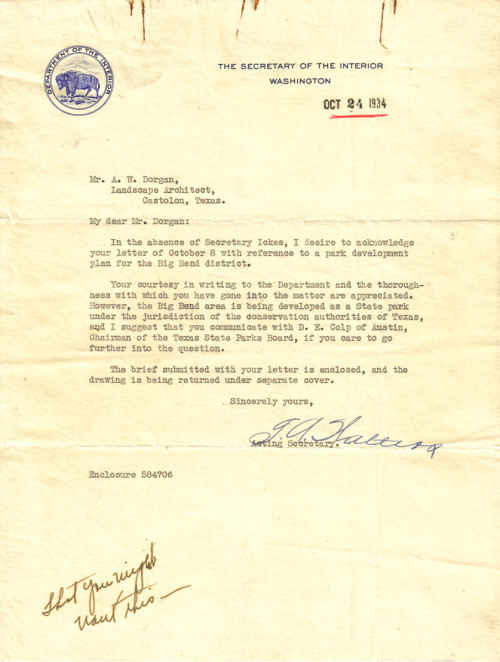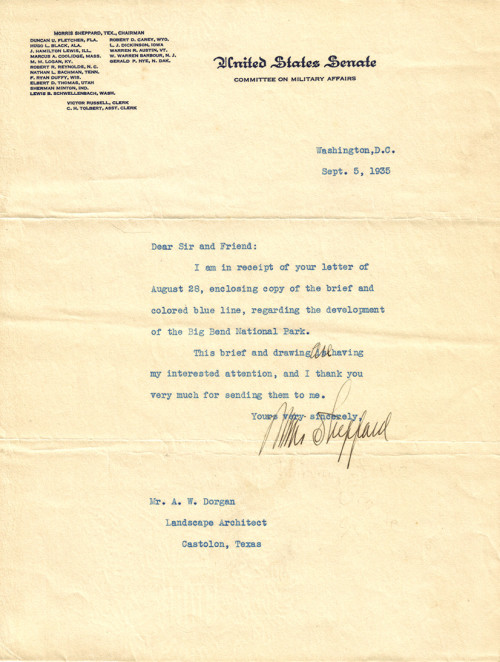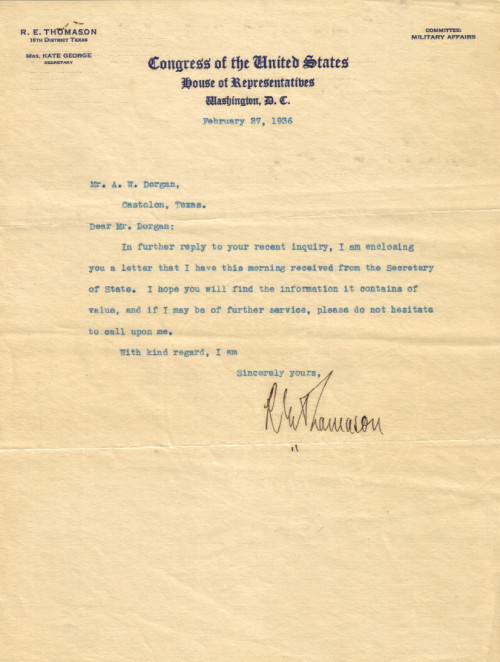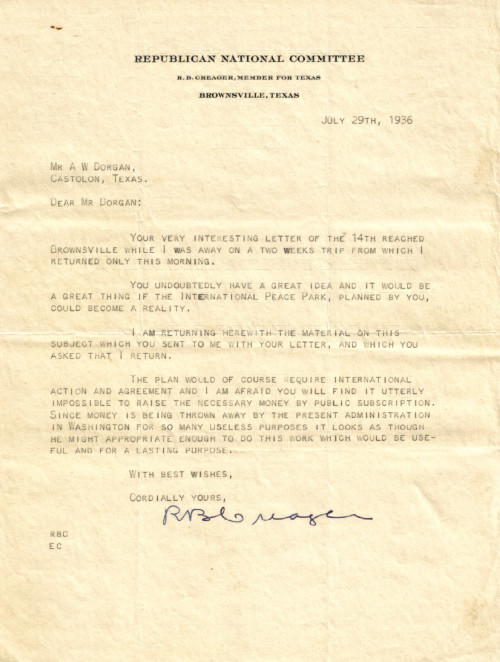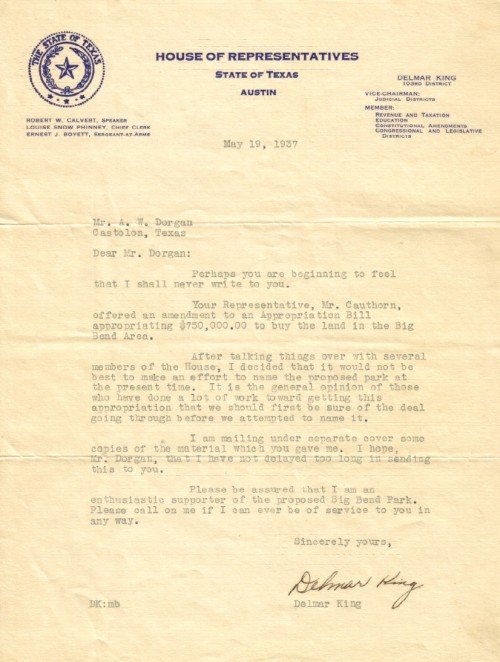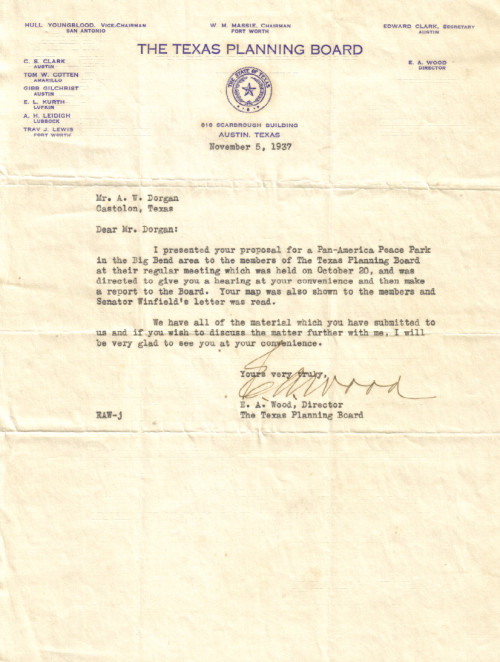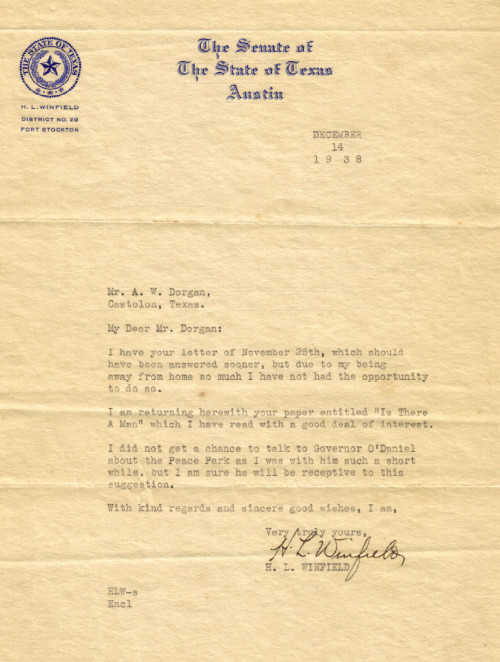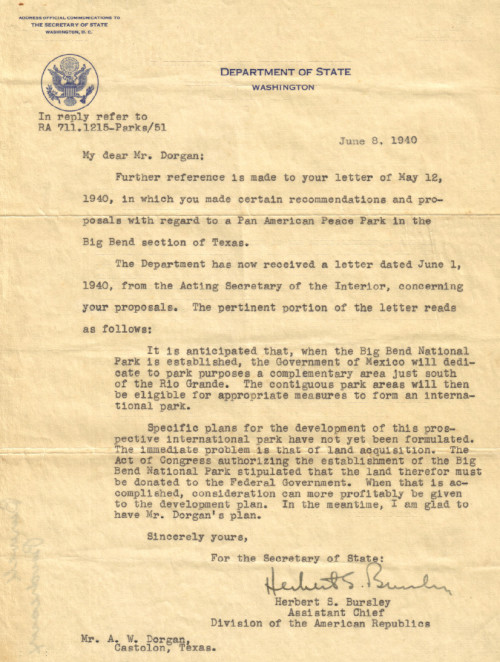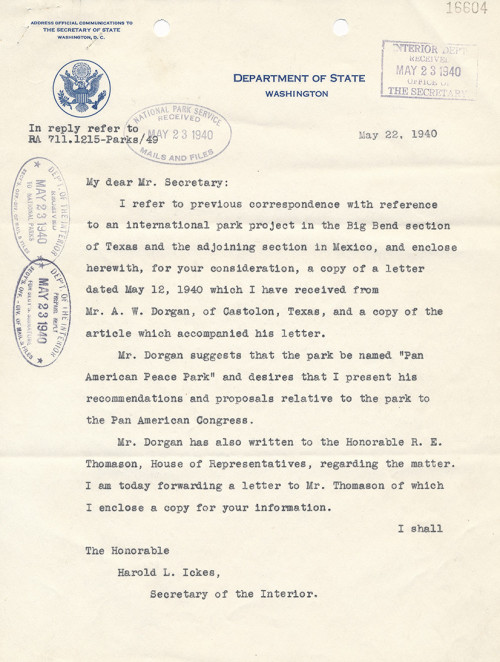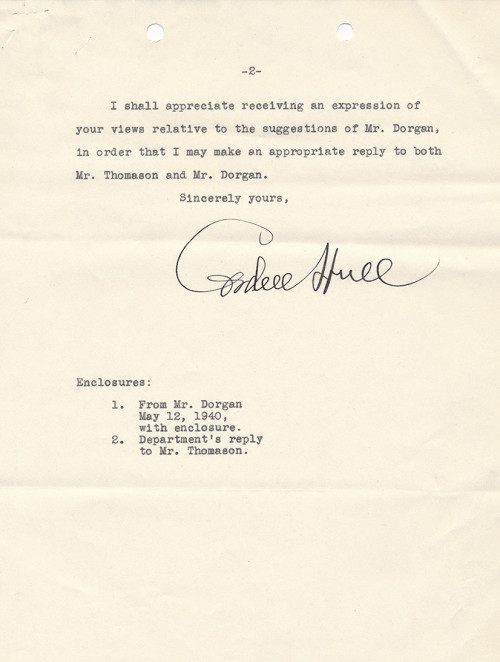Did Texans in Washington and Austin Take Dorgan’s Maps and Plans Seriously?
Ask them.
This cache of letters mailed to the West Texas ghost town of Castolon reveals what is otherwise undiscoverable—the confidential opinions of those in power about a plan that never officially existed.
Secretary of the Interior
24 October 1934
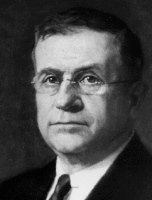
On 8 October 1934, Dorgan submitted a development plan for Big Bend to Secretary of the Interior Harold Ickes—and became the first person to propose an international park on the Rio Grande. In this reply of 24 October, Acting Secretary of the Interior T.A. Walters referred Dorgan to the Texas State Parks Board if he cared “to go further into the question.” Dorgan never contacted the Board.
It is not known who wrote “Thot you might want this.” at the bottom corner of the letter, or if this note refers to the entire cache—held together with three paperclips.
U.S. Senate
5 September 1935
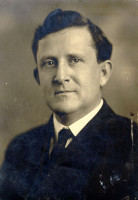
Senator Morris Sheppard was one of the most influential senators in Washington throughout the New Deal, and in March 1935 he introduced a bill in Congress to establish an international park in Big Bend. In this correspondence of 5 September 1935, Sheppard thanked Dorgan for his “brief and drawing” that were “having my interested attention.” Sheppard wrote to President Roosevelt in February 1935 that “it has occurred to me that it would be a splendid thing to take up with Mexico the matter of an international park.” This plan had already “occurred” to Dorgan in October 1934—nearly four months before Sheppard approached Roosevelt with a nearly identical proposal.
U.S. House of Representatives
27 February 1936
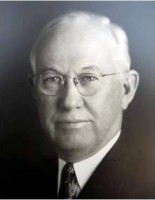
In March 1935, El Paso Congressman R. Ewing Thomason submitted legislation in the House to establish a national park in Big Bend. On 27 February 1936, Thomason forwarded Dorgan “a letter that I have this morning received from the Secretary of State” with the hope that Dorgan “will find the information it contains of value.” Thomason and Dorgan corresponded from at least 1936 through 1941, with Thomason forwarding several letters to Dorgan from the Secretary of State.
Republican National Committee
29 July 1936
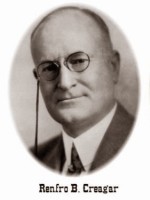
While the Democratic Party ruled Texas during the New Deal, this letter documents bipartisan support for Dorgan’s international peace park. In his letter of 27 July 1936, R.B. Creager—member of the Republican National Committee for Texas—expressed approval of Dorgan’s plan while condemning the Roosevelt Administration. Creager believed “it would be a great thing if the international peace park, planned by you, could become a reality.” With regards to FDR, Creager reasoned that “since money is being thrown away by the present administration in Washington for so many useless purposes it looks as though he might appropriate enough to do this work which would be useful and for a lasting purpose.”
Texas House of Representatives
19 May 1937
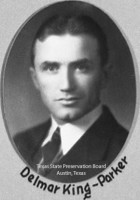
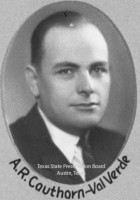
This letter documents the fact that select Texas legislators were pursuing a “proposed park” separate from the National Park Service. In March 1935, Thomason proposed a “Big Bend National Park”, yet over two years later, legislators were still waiting to “be sure of the deal going through before we attempted to name it.” In January 1937, Senator H.L. Winfield and Rep. Albert Cauthorn (of Del Rio) submitted the “Winfield/Cauthorn bill” to the Texas legislature. Cauthorn pursued a $750,000 appropriation for land purchases in Big Bend, and on 19 May 1937, Rep. Delmar King updated Dorgan on the progress of land acquisition in the House. King referred to Cauthorn as “your Representative” and advised Dorgan that “after talking things over with several members of the House, I decided that it would not be best to make an effort to name the proposed park at the present time.” King’s letter reveals that two separate park campaigns existed in Austin: one to create a “Big Bend National Park” and another to create a park referred to here as “the deal.”
Texas Planning Board
5 November 1937
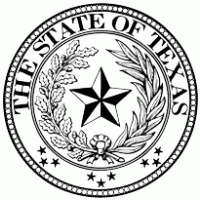
The Texas Planning Board existed from 1934 to 1939 and worked with the federal government to acquire funding for relief projects. The Board conducted studies of river basins, hydroelectric power and highways. On 20 October 1937, Director E.A. Wood presented Dorgan’s map and proposal to the Board at their regular meeting. In this letter of 5 November 1937, Director Wood informed Dorgan that he “was directed to give you a hearing at your convenience and then make a report to the Board.” A letter by Senator H.L. Winfield was also read at the meeting; Dorgan received a letter from Winfield in 1938. Director Wood closed by informing Dorgan that “if you wish to discuss the matter further with me, I will be very glad to see you at your convenience.”
Texas Senate and Govenor
14 December 1938
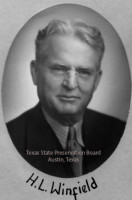
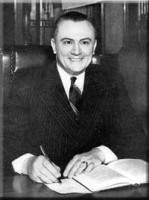
State Senator H.L. Winfield, of Fort Stockton, was the state politician most closely associated with the Big Bend park movement. As a member of the Committee on Banking and Finance, Winfield helped oversee the Big Bend land purchase program. In December 1938, he read a manuscript by Dorgan “with a good deal of interest” and informed Dorgan that ““I did not get a chance to talk to Governor O’Daniel about the Peace Park as I was with him such a short while, but I am sure he will be receptive to this suggestion.” The “suggestion” remains unknown, but within a month of writing to Dorgan, both Winfield and O’Daniel submitted bills requesting appropriations to purchase Big Bend.
U.S. Secretary of State
8 June 1940
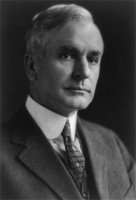
This correspondence of 8 June 1940 refers to a previous letter by Dorgan to Secretary of State Cordell Hull. Secretary Hull asked Secretary of the Interior Harold Ickes if it were possible for Dorgan to present his plans for a Pan American Peace Park to the Pan American Congress currently meeting in Washington. The Acting Secretary of the Interior informed Secretary Hull that the area must first be established as a national park, but “in the meantime, I am glad to have Mr. Dorgan’s plan.”
How High Did This Go?
On 22 May 1940, Secretary Hull personally wrote to Secretary of the Interior Harold Ickes to advise that Mr. Dorgan “desires that I present his recommendations and proposals relative to the park to the Pan American Congress.” Hull requested of Ickes “an expression of your views relative to the suggestions of Mr. Dorgan, in order that I may make an appropriate reply to both Mr. Thomason and Mr. Dorgan.” Rep. Thomason wrote and introduced the enabling legislation for Big Bend National Park in March 1935, but in May 1940 he endorsed Dorgan’s plan for a “Pan American Peace Park” in Big Bend.
The fact that two members of FDR’s Cabinet discussed Dorgan’s plan—with support from the Vice Chairman of the House Committee on Military Affairs—is historically significant. Yet prior to 2014, this document remained unexamined in the National Archives

From left to right: Cordell Hull – Secretary of State, Albert W. Dorgan – “Landscape Architect”, R.Ewing Thomason – Vice Chairman, House Committee on Military Affairs, Harold L. Ickes – Secretary of the Interior

